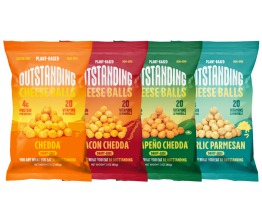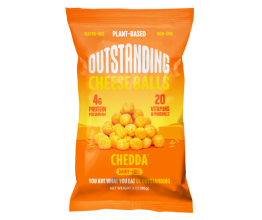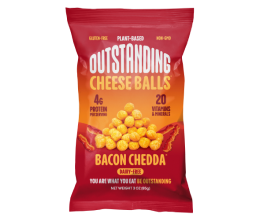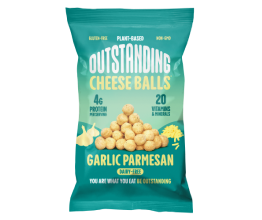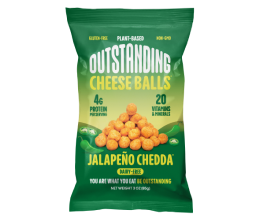Kosher Salt vs. Sea Salt: Understanding the Difference
So you want to be like Salt Bae, huh? You find yourself scrolling through your grocery store delivery app, trying to add all of the ingredients to your cart for the bomb new recipe you want to try, and then you realize you’re out of salt.
Whoa. Why are there so many choices? Salt is salt, right? Does it really matter which one we buy? Is there a difference?
Adding salt to any dish, especially with a little flair, can make or break your meal. If you’ve ever watched a single episode of any cooking competition ever, you’ll know the importance of salt when it comes to making a tasty dish. But with many choices in the spice aisle, what kind are you supposed to choose and why?
We’ve all heard of kosher salt and sea salt, but what’s the difference? Let’s dig in!
Keepin’ Up With the Kosher (Salt)
If we want to learn about kosher salt, we first need to learn a little about the kosher diet. The kosher way of life follows very strict guidelines laid out in the Torah and is customarily followed by those practicing the religion of Judaism. That’s most often, but not limited to, Orthodox Jews and Hasidic Jews, as they tend to be more conservative.
How Do You Know if Something Is Kosher?
For a company to label its products as kosher, it must meet these strict guidelines and be carefully inspected and certified by a licensed mashgiach (“watcher” in Hebrew). The mashgiach is overseen by the hashgachah (“supervision” in Hebrew) or supervision agency.
Jewish law is sacred to its followers, but you don’t have to be Jewish to benefit from the kosher seal of approval. We find that the extra bump in certifications makes us even more comfortable with the food we consume.
If you want to be sure what you are eating is really kosher approved, look out for the K, OK, KD, or circled U on your favorite packaged food labels. The word Parve may also be printed. “Parve” lets the consumer know that the particular food item is kosher by nature, so it’s not meat and it’s dairy-free. That circled U we mentioned is interchangeable for printing parve on the packaging.
The truth is, there are multiple ways for companies to show that their products are kosher, so don’t be afraid to do a little research if you are unsure. Look out for different symbols on your packaging and look up exactly what they mean.
Cool Kosher Snacks
When many people think of a strict kosher diet, they usually bring up the fact that you have to pass on the pork. Sure, there’s still a huge bacon movement happening right now, and hot dogs are a staple at any American backyard BBQ, but don’t worry if you’re following a kosher lifestyle and feel like you’re missing out on the pork products. Our vegan friends got you!
Salty and satisfying snacks like Outstanding Foods Pig Out Pigless Pork Rinds will leave even your non-kosher friends begging you to share! These puppies have 25g of plant-based protein per bag, plus 75% less sodium and 67% less saturated fat than traditional pork rinds. As if that wasn’t enough, we’re also looking at a label that is:
- Kosher Certified
- Plant-Based Certified
- Gluten-Free
- Non-GMO
- Soy Free
- Cholesterol Free
Best of all, we have five different flavors that were created by our resident badass, Chef Dave Anderson, for maximum delish factor. Set your mouth ablaze with Hella Hot, or get your cheese on with Nacho Cheese. We even have a Texas BBQ flavor for the meatiest non-meat experience ever.
What Makes Kosher Salt, Well, Kosher?
The name “kosher salt” is actually misleading. Kosher salt is nothing more than coarse table salt that hasn’t been iodized.
Since salt is a mineral, by nature, it is already a kosher food. Some companies choose to receive the kosher seal of approval in order to let consumers know their salt is appropriate for salting meat and that it has been certified as pure and has not been contaminated by other ingredients.
BTW, salting meat refers to the practice of using salt to help dry up the blood in uncooked meat, as Jewish dietary law does not allow the consumption of blood.
Let’s Spill the Tea on Sea Salt
You may or may not need an explanation on this one, but sea salt is exactly what it sounds like: Salt that is derived from the ocean or a saltwater lake (obvi). Once the water has evaporated, we are left with that delicious salt that makes us feel all fancy-schmancy when we cook with it.
You’ve probably noticed that sea salt has also made its way into the popular dessert scene. Dark chocolate fudge brownies with sea salt, caramel creme brulee with sea salt, pecan caramel cheesecake with sea salt—you get the idea. This stuff is everywhere!
Sea salt is most commonly used and often thought of as a coarse salt, but it actually comes in a variety of granule sizes. It is also thought of as more healthy than table salt, but that’s not necessarily true. Either way, we still stan sea salt!
But Wait...There’s More to Learn About Salt!
We now know about two popular coarse salt options: Kosher salt and sea salt. But what about all the others on the market? How about traditional table salt and Himalayan pink salt? Let’s take a look!
Traditional Table Salt
Table salt has a bit more going on than its pure counterparts, but that is not necessarily a bad thing. The salt you’ll find in the shaker of your local diner was most likely derived from underground salt deposits.
Table salt typically has added agents (we’ll spare you the science) to prevent clumping (ew, thank goodness for that!) and has added iodine. Iodized salt is an important part of a balanced diet, as the added iodine is necessary to promote healthy thyroid function. If you’re not sure what that means, go ahead and Google “goiter.” We’ll wait.
Himalayan Pink Salt
A few years ago, this beautiful pink salt started showing up everywhere. You couldn’t go into a houseware store or middle-aged hippy’s home without running into either a shaker of it or, more likely, a lamp made out of it. Yes, those large pink rock lamps are actually chunks of salt mined from the Himalayan Mountains in South Asia. The salt lamps are typically hollowed out and have a small light bulb placed in the bottom.
This pink salt has been credited with providing countless health benefits, but the research is still coming in to back up those claims. Not only is the salt tasty, but many believe its lower sodium content is prime. With a third of the sodium of normal table salt, it is hard to disagree.
Have you ever heard of a “salt room?” These are rooms or pods made up primarily of Himalayan pink salt, where people can sit inside and breathe in all of that salty, salty goodness.
The theory is that this salt therapy can help with lung conditions like COPD (chronic obstructive pulmonary disease), allergies, and more. The experts have yet to decide if these treatments are actually helpful, but salt rooms seem to be popping up in every other strip mall, so people seem to like them. Give it a try, and let us know what you think!
So, How Do We Choose the Right Salt?
Since kosher salt and sea salt seem to have similar properties, let’s do a quick side by side of the two.
- While both salts come in with a coarse option, sea salt can actually be purchased in a variety of coarseness.
- Both salts are technically kosher.
- Like any type of edible salt, sea salt and kosher salt should be consumed in moderation. The Dietary Guidelines for Americans suggest staying under 2,300mg per day.
- Kosher salt may be derived from salt mines, whereas sea salt comes from bodies of saltwater.
When it comes down to it, there are very few differences. If someone were to make a duet on TikTok showcasing kosher salt and sea salt, the comparisons would be nearly identical. At the end of the day, it comes down to availability at the time and what hits different to you. So tell us, which one are you choosing?
Sources:
What Is “Kosher Salt”? | Kosher | Chabad
Sea salt vs. table salt: What's the difference? | Mayo Clinic
Himalayan Pink Salt: Are There Health Benefits? Pros and Cons, Nutrition, and More | WebMD
